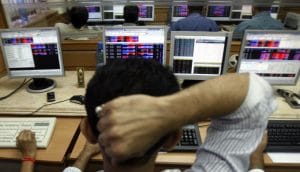Budget 2020: Mutual fund side pocket will now tax you less
Summary
Investors in debt mutual funds (MFs), whose investments in fixed income schemes have been assigned to a ‘side pocket’ — means they are segregated from the main portfolio — due to the ratings downgrade of debt securities issued by crisis-hit entities such as DHFL and Vodafone Idea, have something to cheer from the union budget.
Investors in debt mutual funds (MFs), whose investments in fixed income schemes have been assigned to a ‘side pocket’ — means they are segregated from the main portfolio — due to the ratings downgrade of debt securities issued by crisis-hit entities such as DHFL and Vodafone Idea, have something to cheer from the union budget.
Profits from redemption or sale of units from a side-pocket following a recovery would attract the concessional rate applicable to long-term capital gains (LTCG) and not short-term capital gains (STCG). If debt investments are sold after three years, the returns are treated as LTCG and taxed at 20 percent with indexation benefit. Indexation brings down the tax outgo as it inflates the purchase cost.
If debt funds are sold before three years, they are treated as STCG. The gains are added to the income and taxed according to the income tax slab of the investor.
How the change plays out
Currently, units in the side pocket are considered created on the day the portfolio is segregated and not on the day the original investment was made for taxation purposes. This means that investors would end up paying a higher STCG tax for the gains made during recovery.
Union Budget 2020 has changed this by treating them as LTCG for taxation. “In the case of a capital asset, being a unit or units in a segregated portfolio referred to in sub-section (2AG) of section 49, there shall be included the period for which the original unit or units in the main portfolio were held by the assessee,” the Finance Bill said.
“The cost of acquisition of a unit or units in the segregated portfolio shall be the amount which bears, to the cost of acquisition of a unit or units held by the assessee in the total portfolio, the same proportion as the net asset value of the asset transferred to the segregated portfolio bears to the net asset value of the total portfolio immediately before the segregation of portfolios,” it said.
Personal finance experts said a recovery in the side pocket would not be treated as per STCG. Now, the original date of the investment will be valid for the units held in the side pocket also. “Ideally, it (side pocket in a debt MF) should be treated as a new investment. This (treatment as LTCG) is positive for investors,” said Suresh Sadagopan, founder, Ladder7 Financial Advisories.
Only two mutual funds—Tata MF and Franklin Templeton MF—have created a side pocket for investors so far. Side pocketing removes the bad apples from the good ones. In the case of credit events, existing investors potentially lose all value if there is no side pocket.
With side pockets, investors, who take the hit when the credit event happens, get the full upside of a future recovery. When recovery is made in the side pocketed portfolio, the same is distributed among investors on a pro-rata basis.
Allirajan M is a journalist based in Coimbatore.

Elon Musk forms several ‘X Holdings’ companies to fund potential Twitter buyout
3 Mins Read
Thursday’s filing dispelled some doubts, though Musk still has work to do. He and his advisers will spend the coming days vetting potential investors for the equity portion of his offer, according to people familiar with the matter









 Listen to the Article
Listen to the Article  Daily Newsletter
Daily Newsletter









 “These are cyclical funds and tend to do well when interest rates go down and vice versa,” said Maneesh Dangi, co-CIO, Aditya Birla Sun Life MF. Long duration debt and gilt funds have high exposure to G-Secs. The top-ranked fund has gained nearly 13.1 percent in the past one year, which is among the best in widely traded assets.
“These are cyclical funds and tend to do well when interest rates go down and vice versa,” said Maneesh Dangi, co-CIO, Aditya Birla Sun Life MF. Long duration debt and gilt funds have high exposure to G-Secs. The top-ranked fund has gained nearly 13.1 percent in the past one year, which is among the best in widely traded assets.
